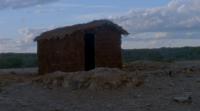Sertões
Articles tagged with Sertões
Tag Archive
- african
- african-descent
- Afrikanische Straße
- Ana Paula Tavares
- art
- arte rupestre
- biden
- black art
- black history
- Brazil
- Cheryl Dunye
- chilhood memories
- civil war
- collect the work of black artists
- colonial legacies
- communality
- cultures
- Dak'art 2016
- Danças africanas
- David Livingstone
- democracy
- Desert Travel
- diáspora caboverdiana
- direitos humanos
- drawing literature
- estudio
- expression
- Feira
- Felix Schumba
- Felwine Sarr
- femini
- Festival de Músicas do Mundo
- Frontiers
- game
- geological phenomena
- Ghoya
- Giorgio Agamben
- global relations
- glotophobia
- Hanami
- hegemony
- Histórias Contadas
- illegal
- Imperial Garden
- imperialism
- interculturalidade
- intersectionality
- Interwinings: peripheral arts
- Krik-krak
- kuduro
- kurdish
- Kurdish people
- language diversity
- language policies
- Latin American music
- Maré
- Mário Macilau
- Marsha P. Johnson
- media
- Memories of the Poisoned River
- Music
- music industry
- musseque
- Mwamby Wassaky
- nacionalismo
- next future
- Ngola Ritmos
- nomadism
- ocupy wall street
- painting
- pandemic
- patera
- patrimony
- Paulo Faria
- Paulo Flores
- PCP
- politics of memory
- Portugal
- post-colonial
- post-colonialism
- Regina Guimarães
- Remittances
- resistance
- return
- REVISTA JSF#2
- Robyn Orlin
- satellite
- semba
- solidarity
- Sueli Duarte
- super mama djombo
- tchiloli
- Terra Batida
- terrorisme
- Vasco da Gama
- walk
- war
- Whiteness
- William Kentridge
- x
 Nurturing faith and congregating the faithful into groups of followers, all sorts of leaders emerged in the Sertão, often transmuting themselves in the process: from counselors to preachers, from priests to messiahs, from blessed to saints, all combinations were possible. When congregations took on contestations in political dimensions, they quickly came to be seen as a threat to the established order. For the authorities and representatives of official Catholicism, the religious leader then became an impostor, revolutionary, or bandit. The police or the army oversaw reducing the rebels - leader, and followers.
Nurturing faith and congregating the faithful into groups of followers, all sorts of leaders emerged in the Sertão, often transmuting themselves in the process: from counselors to preachers, from priests to messiahs, from blessed to saints, all combinations were possible. When congregations took on contestations in political dimensions, they quickly came to be seen as a threat to the established order. For the authorities and representatives of official Catholicism, the religious leader then became an impostor, revolutionary, or bandit. The police or the army oversaw reducing the rebels - leader, and followers. 